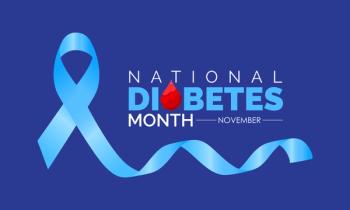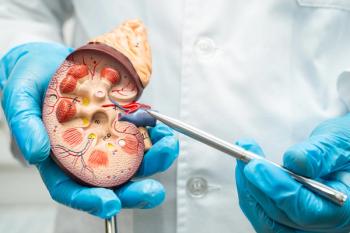
Pharmacy Practice in Focus: Oncology
- December 2021
- Volume 3
- Issue 6
Addressing the High Cost of Gene Therapies for Rare Diseases: An SPBM Perspective
As some of the nation’s leading pharmaceutical and biotech giants ramp up product development and commercialization, what was once a futuristic concept has become a reality.
Gene therapies are not simply another new class of specialty drugs to treat symptoms of a given disease, but instead aim to cure by correcting the underlying genetic abnormalities causing the disease.1 As some of the nation’s leading pharmaceutical and biotech giants ramp up product development and commercialization, what was once a futuristic concept has become a reality.
With more than 900 investigational new drug applications for ongoing clinical studies of gene therapy products under way and the FDA predicting approval of 10 to 20 gene therapies a year, the availability of these groundbreaking drugs is becoming an emerging driver of change in alternative payment models, ushering in a growing role for specialty pharmacy benefit management (SPBM).2
In their role within specialty pharmacy, specialty-focused pharmaceutical management companies can help reduce prescription drug costs, engage patients to make better health decisions, and maximize the use of their benefits while supporting health care providers through evidence-based care.
A Pharmacy Trend Ramps Up
Gene therapy, a type of highly targeted treatment that uses genetic material with the goal of changing a disease’s course, presents new and potentially life-altering options for patients.3 But the costs can be staggering. A new spinal muscular atrophy gene therapy, onasemnogene abeparvovec-xioi (Zolgensma; Novartis), far and away leads the list with its one-time price of $2.12 million.4 Another near the top is the first approved one-time DNA-altering gene therapy voretigene neparvovec-rzyl (Luxturna; Spark Therapeutics), which cures an inherited retinal disease that leads to blindness; its price tag: $850,000.
As diagnosis rates for rare disease rise, the drug pipeline continues to grow and advance through clinical trials. National Institutes of Health estimates that there are about 7000 rare diseases that affect approximately 25 million to 30 million Americans—and many have no approved therapies.3
The 1-gene group of rare genetic disorders being studied for gene therapies includes the following:
- Cystic fibrosis is a disorder caused by CFTR gene mutation that makes the body unable to produce a specific protein essential for free-flowing mucous. Because of the lack of protein production, a thick sticky mucus builds up in the lining of the lungs.
- Duchenne muscular dystrophy (DMD) is a result of the mutation of the DMD gene, which is necessary for producing a protein responsible for muscle development.
- Gaucher disease is caused by a single gene, GBA1, that can have many mutations. The different types of the disease break down into 2 categories: those that do not affect the nervous system (type 1) and those that do (types 2 and 3).
- Hemophilia A and B are caused by a mutation in either the F8 or F9 genes. With the presence of this mutation, a person with hemophilia is missing an important element needed for their blood to clot after an injury.
- Sanfilippo syndrome (mucopolysaccharidosis type III) is caused by a nonfunctional or missing SGSH gene, which produces an enzyme that’s essential for processing sugar molecules. This causes a buildup in different areas of the body, especially the brain, leading to neurological and developmental issues.
- Spinal muscular atrophy is caused by a missing or nonfunctional SMN1 gene, which is responsible for a protein that connects certain nerves, or motor neurons, to muscles, supporting their functioning. Over time, these motor neurons die, and the muscles required for walking, talking, eating, and breathing eventually cease to function.
Next-Generation Payment Models
Although million-dollar gene therapies are promising, the possibility exists that they won’t work. Unlike other products, refunds for these therapies are not authorized. Furthermore, simply repackaging existing services or negotiating value-based contracting based on predefined outcome measures may not suffice.
However, new alternative payment models may make costly human gene therapies financially feasible for stakeholders. This benefits the manufacturers as well, as they have high market expectations for the increased use of these exciting new interventions that give patients and providers expanded therapeutic choices.
Long-awaited, timely solutions that go beyond the traditional pharma-payer/pharmacy benefit manager (PBM) framework to enable affordability could help payers manage the extraordinary costs of novel products. Currently, innovative programs are being designed to help make gene therapies and other specialty drugs more affordable. The goal of these alternative financing models is to assist in the management of value-based relationships between manufacturers and payers, including price monitoring and tracking trends for high-cost therapies.
Because of their efforts, SPBM programs have been successful in reducing costs for specialty and high-cost therapies, including emerging gene therapies. In fact, a suite of financial and insurance products is likely to become the industry standard for how high-cost medical care is delivered and paid for.
By treating each situation individually to maximize the outcome for patients and payers, SPBMs can help make emerging therapies not only more affordable but also more accessible, while increasing the quality of care.
Additionally, specialty-focused care improves patient adherence to their treatment plans, supports patient safety, and helps patients afford lower-cost pharmacy plans that offer convenient access and extra discounts at certain pharmacies.
Finding the Right SPBM Partner
An effective SPBM partner can help to ensure that a patient is getting the right therapy at the right time and the right treatment plan with the least amount of waste. Additionally, by identifying the most cost-effective route possible for the highest quality of care, the right SPBM partner can also offer benefit to other stakeholders within specialty pharmacy as well, such as to payers, pharma/biotech, and providers.
An effective SPBM partner should offer the following:
- Proper inventory and assay management to ensure that dispensed therapies compare reasonably with what’s prescribed and that the patient is receiving the appro- priate number of doses
- Verification services for how much product the individual has available to determine how many more doses are needed each month so that the patient is always covered
- The ability to serve as a hybrid of traditional and innova- tive approaches that focus on specific populations that have an acute or chronic condition
- Education opportunities for individuals and caregivers regarding programs available, allowing them to feel more empowered after diagnosis and referral
- Personalized approach to enable a preferred formulary, evidence-based clinical policy bulletins and pathways, step therapy, lab, and other clinical assessments
Effective SPBM partners should also foster ongoing positive patient outcomes through persistence, adherence, compliance, and timely collaborative patient management. These professional teams can measure and track program effectiveness and validate savings and opportunities for continuous improvement and best practice outcomes.
Additionally, the most effective SPBM partners support cost containment, making them an obvious choice for innovative financing programs. These SPBM partners deliver value for patients, payers, and manufacturers, offering specialty pharmacy and infusion network options that specialize in data, analytics, and cost modeling, as well as real-time front-end prescription triage to ensure that patients get the right care at the right time.
REFERENCES
- What is gene therapy? how does it work? February 2017. Accessed August 27, 2021.
https://www.fda.gov/consumers/consumer-updates/what-gene-therapy-how-does-it-work - FDA continues strong support of innovation in development of gene therapy products. F. January 28, 2020. Accessed August 27, 2021.
https://www.fda.gov/news-events/press-announcements/fda-continues-strong-support-innovation-development-gene-therapy-products - Gene therapy. National Human Genome Research Institute. Accessed August 27, 2021.
https://www.genome.gov/genetics-glossary/Gene-Therapy - Sagonowsky E. The top 10 most-expensive meds in the U.S.—and they’re not the usual suspects. Fierce Pharma. June 13, 2019. Accessed August 27, 2021.
https://www.fiercepharma.com/pharma/most-expensive-meds-u-s-topped-by-novartis-and-spark-gene-therapies
Articles in this issue
almost 4 years ago
Brown Bag Consult®: Melanomaalmost 4 years ago
Breaking the Bank: Financial Toxicity in Cancer Carealmost 4 years ago
Principles, Updates in Chemotherapy-Induced Nausea, Vomitingalmost 4 years ago
Representation in Oncology Drug Trials Impacts Patient Healthalmost 4 years ago
Current Treatments in Bladder Canceralmost 4 years ago
Self-Management Support in Cancer Carealmost 4 years ago
Marginal Zone Lymphoma: Subtypes, Treatments, the Role of the PharmacistNewsletter
Stay informed on drug updates, treatment guidelines, and pharmacy practice trends—subscribe to Pharmacy Times for weekly clinical insights.


















































































































































































































